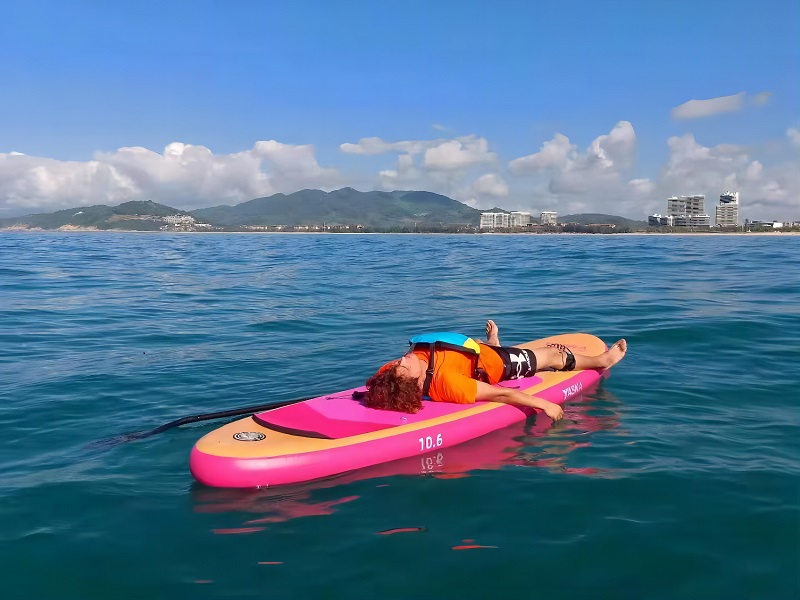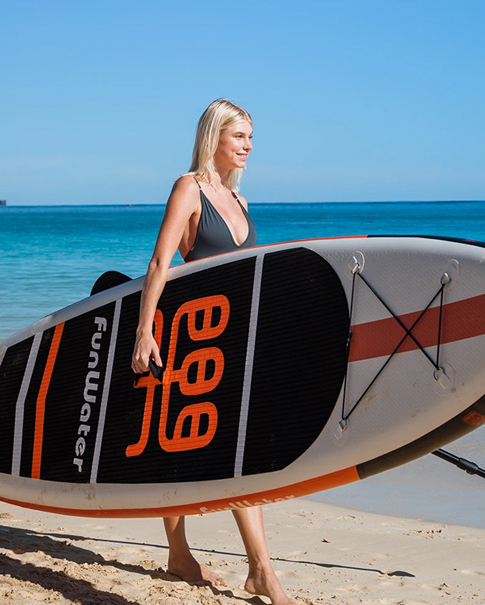How to choose the right sup among so many brands and different boards?
Choosing the right stand-up paddle board (SUP) among the numerous brands and board options can seem overwhelming, but there are several factors to consider that can help you make an informed decision. Here are some steps to guide you:
Determine your purpose: Decide how you plan to use the paddle board. Are you looking for a board for leisurely paddling, surfing, racing, yoga, or touring? Different SUPs are designed for specific activities, so knowing your primary purpose will narrow down your options.

Consider your skill level: Assess your experience and skill level in stand-up paddle boarding. Beginners typically benefit from stable and wider boards, while more advanced paddlers may prefer narrower and faster boards. It's important to choose a board that matches your skill level to ensure an enjoyable experience.
Board dimensions: Pay attention to the length, width, and thickness of the board. Longer boards provide better tracking and speed, while shorter ones are more maneuverable. The width determines stability, with wider boards being more stable, but narrower ones provide better control. Thickness affects the buoyancy and weight capacity of the board.

Board volume and weight capacity: Consider your weight and any additional gear you plan to carry on the board. The volume and weight capacity of the SUP should be sufficient to support your weight and provide stability. Most manufacturers provide volume and weight capacity information for their boards.
Hull shape: SUPs come in various hull shapes, including flat, displacement, planing, and hybrid. Each type has its advantages and is suited to different conditions. Flat hulls offer stability, displacement hulls provide better efficiency for touring, planing hulls are ideal for surfing, and hybrid hulls offer a balance between stability and performance.
Construction materials: SUPs are typically made of different materials, such as inflatable PVC, epoxy, fiberglass, and carbon fiber. Inflatable boards offer portability and easy storage, while rigid boards provide better performance. Consider the durability, weight, and maintenance requirements of the different materials.
Test and demo opportunities: Whenever possible, try out different SUPs before making a purchase. Attend paddleboard demos or rent boards to get a feel for different brands and models. Testing the boards firsthand will give you a better understanding of their performance, stability, and maneuverability.
Research brands and read reviews: Research different SUP brands to learn about their reputation, customer reviews, and reliability. Look for boards with positive feedback and high ratings in terms of quality, customer service, and performance.
Budget: Set a budget for your paddle board purchase. SUPs vary in price based on their construction, materials, and features. Determine your budget range before diving into specific brands and models.
Seek expert advice: If you're unsure or overwhelmed, consult with experts at local paddle board shops or seek advice from experienced SUP enthusiasts. They can provide personalized recommendations based on your needs and help you find the right board.
By considering these factors, you can narrow down your options and find the SUP that best suits your preferences, skill level, and intended use

